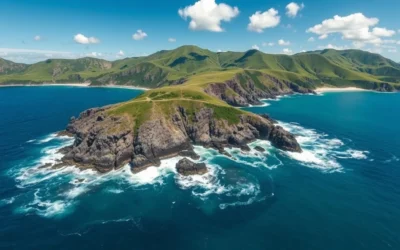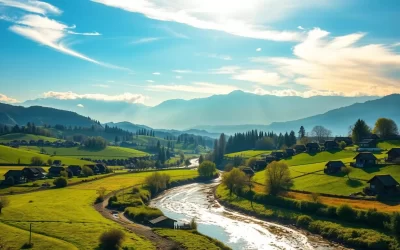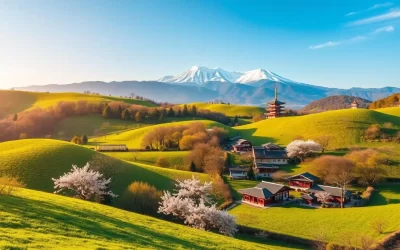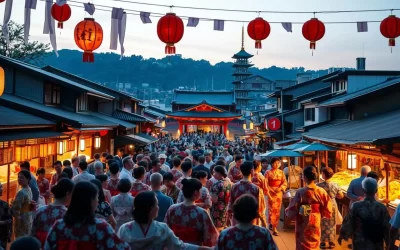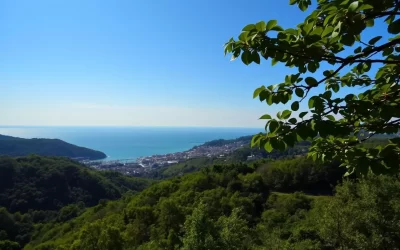Planning a trip to Ibaraki Prefecture can be a rewarding experience, especially when you time your visit right. The region offers a unique blend of traditional Japanese culture and natural beauty, with distinct seasonal attractions that can make or break your travel experience.
Understanding the local weather patterns and seasonal variations is crucial to making the most of your trip. Whether you’re looking to enjoy the cherry blossoms in spring, the vibrant fall foliage, or relax in a hot spring during winter, knowing the best times to visit can enhance your experience.
By considering factors such as temperatures and crowd sizes, you can plan a more enjoyable and stress-free trip to this often-overlooked gem in Japan’s Kanto region.
Understanding Ibaraki Prefecture’s Climate
Understanding the climate of Ibaraki Prefecture is crucial for planning a trip that makes the most of your travel experiences. Ibaraki, situated in the Kanto region, boasts a climate that is representative of central Japan’s four distinct seasons.
Geographic Location and Weather Patterns
Ibaraki’s geographic location significantly influences its weather patterns. Positioned on the Pacific coast, the prefecture experiences a moderate climate, with seasonal variations that are characteristic of the region. The Pacific coastal location means that Ibaraki generally receives less snowfall during winter compared to areas on the Sea of Japan side.
The varied landscape, including mountainous western regions and coastal areas, contributes to diverse microclimates within the prefecture. For instance, the eastern coastal areas are influenced by ocean currents, creating unique weather conditions.
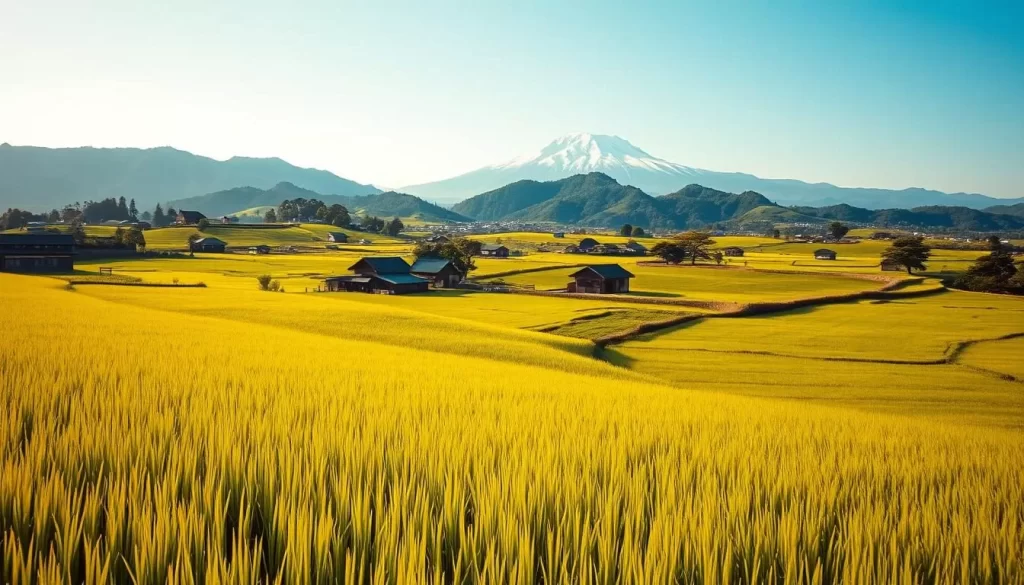
How Ibaraki’s Climate Differs from Other Japanese Regions
Ibaraki’s climate is distinct from other Japanese regions in several ways. Unlike the harsh winters of Hokkaido or the subtropical climate of Okinawa, Ibaraki offers a more balanced climate, embodying the classic four seasons. Compared to Tokyo, Ibaraki typically experiences slightly cooler temperatures and less urban heat island effect, making it a more comfortable destination during the summer.
| Region | Winter | Summer |
|---|---|---|
| Ibaraki | Mild winters with less snowfall | Cooler than Tokyo, comfortable |
| Hokkaido | Frigid winters | Mild summers |
| Okinawa | Subtropical winters | Hot and humid summers |
Understanding these differences is key to appreciating why certain months are ideal for visiting Ibaraki, making it a weather-savvy destination choice.
Spring in Ibaraki: Cherry Blossoms and Mild Weather
Ibaraki Prefecture comes alive in the spring, offering a unique blend of natural beauty and cultural experiences. You can enjoy the mild weather and vibrant festivals that celebrate the season.
March to May Weather Overview
Spring in Ibaraki, from March to May, brings mild temperatures, making it an ideal time to explore the outdoors. You can expect pleasant daytime temperatures, perfect for viewing cherry blossoms and participating in outdoor events.
Cherry Blossom Season Highlights
The cherry blossom season is a highlight of spring in Ibaraki. The Hitachi Sakura Festival in early April is a must-visit, featuring cherry blossoms along with traditional performances and nighttime illuminations.
Spring Festivals and Events in Ibaraki
Spring in Ibaraki is filled with numerous festivals. Tsuchiura’s Sakura Festival offers blossoms viewing from unique perspectives, including boat rides along the Sakura River. The Kasama Pottery Festival showcases traditional craftsmanship, coinciding with the end of the cherry blossom season.
These spring events provide a chance to experience local culture and cuisine, featuring fresh seafood and spring vegetables. You can enjoy the festive atmosphere and create lasting memories of your visit to Ibaraki during this beautiful season.
Summer Adventures: Navigating the Heat and Humidity
Ibaraki Prefecture comes alive during the summer months with a plethora of festivals, water activities, and cultural experiences. While the heat and humidity can be intense, the prefecture offers various ways to enjoy the season.
June to August Temperature and Rainfall Patterns
Summer in Ibaraki is characterized by hot and humid weather, with temperatures often reaching their peak in August. The region experiences significant rainfall during these months, contributing to the lush green landscapes.
| Month | Average Temperature (°C) | Average Rainfall (mm) |
|---|---|---|
| June | 22 | 120 |
| July | 26 | 150 |
| August | 28 | 140 |
Beach Destinations and Water Activities
Ibaraki’s coastline offers several beach destinations perfect for summer travel. Visitors can enjoy swimming, surfing, and other water activities at spots like Oarai Beach and Kashima Beach.
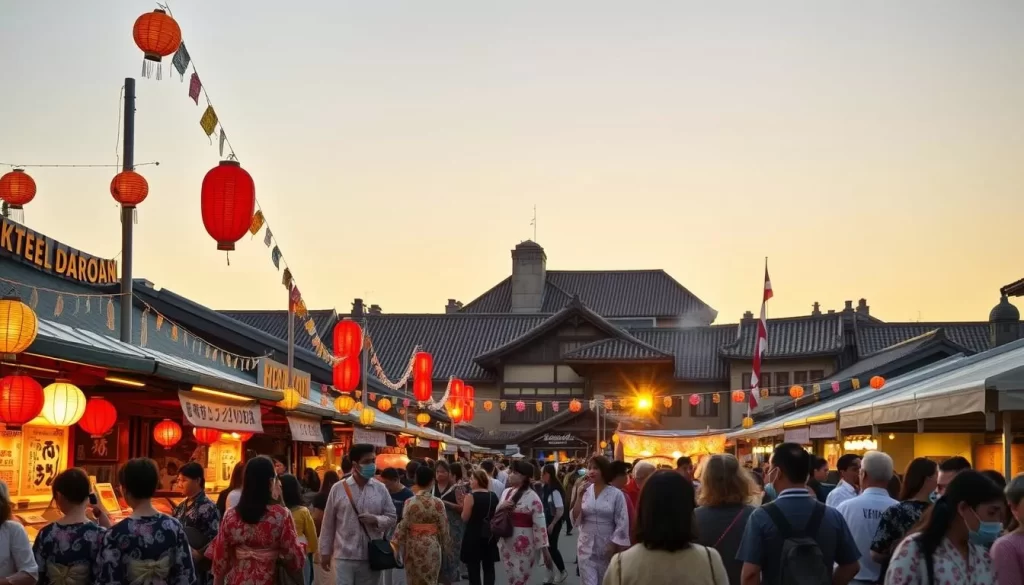
Summer Festivals and Cultural Experiences
The festivals during summer are a highlight of Ibaraki’s cultural calendar. Events like the Mito Komon Festival in August and the Oarai Maritime Festival in July attract large crowds. These events showcase local traditions, with fireworks, traditional dances, and local cuisine being key features.
Summer is a great time to experience Ibaraki’s vibrant culture, with numerous festivals and events that offer a respite from the heat. Visitors can enjoy local specialties and participate in traditional ceremonies, making for a memorable travel experience.
Autumn Glory: Fall Foliage and Harvest Season
Experience the best of Ibaraki’s autumn, from stunning fall foliage to delicious seasonal cuisine. The prefecture comes alive with vibrant colors and festive celebrations, making it an ideal time to visit.
September to November Weather Conditions
September to November brings mild temperatures and comfortable humidity, making it perfect for outdoor activities. The average temperature ranges from 10°C to 20°C (50°F to 68°F), ideal for enjoying the fall foliage.
Top Spots for Viewing Fall Colors
Ibaraki is home to numerous scenic spots for viewing the autumn colors. Some top recommendations include visiting the Tsukuba Mountain and exploring the Kasumigaura Lake area. These locations offer breathtaking views of the fall foliage.
Harvest Festivals and Seasonal Cuisine
Autumn in Ibaraki celebrates the harvest season with numerous food festivals, highlighting local specialties such as sweet potatoes, chestnuts, and apples. You can enjoy seasonal cuisine featuring matsutake mushrooms and Pacific saury (sanma). With fewer crowds than summer festivals, you can savor the flavors of autumn in a more relaxed atmosphere.
Winter Escapes: Embracing the Cooler Months
The winter season in Ibaraki Prefecture is a time for cozying up in hot springs, enjoying illuminations, and participating in New Year celebrations. As the cooler months set in, the region offers a unique blend of cultural experiences and natural beauty.
December to February Climate Overview
Ibaraki’s winter climate is characterized by cooler temperatures, with December to February being the coldest months. While it’s not as harsh as in northern Japan, visitors can still expect chilly conditions, making it an ideal time to enjoy indoor activities and warm hospitality. The average temperature ranges, making it suitable for various winter sports and activities.
Hot Springs and Indoor Attractions
One of the highlights of visiting Ibaraki in winter is the opportunity to relax in its numerous hot springs. These natural hot springs are perfect for warming up on a chilly day. Additionally, Ibaraki’s museums, galleries, and indoor facilities offer a warm respite from the cold, providing a rich cultural experience.
Winter Illuminations and New Year Celebrations
New Year is a significant period in Ibaraki, with various temples and shrines hosting hatsumode (first shrine visit of the year) events. The prefecture is also renowned for its stunning winter illuminations, with places like Mito’s Kairakuen Garden and Hitachi Seaside Park offering breathtaking displays. These events make the New Year period one of the best times to experience traditional Japanese customs and festivities.
- Experience the serene landscapes and cultural festivities that Ibaraki offers during the winter months.
- Enjoy the prefecture’s hot springs and indoor attractions to warm up during the cold winter days.
- Participate in the vibrant New Year celebrations and witness the beautiful winter illuminations.
Ibaraki Prefecture, Japan: Best Months for a Weather-Savvy Trip
To make the most of your trip to Ibaraki, it’s essential to know the best months to visit based on your preferences. The prefecture’s diverse climate and seasonal attractions offer a range of experiences throughout the year.
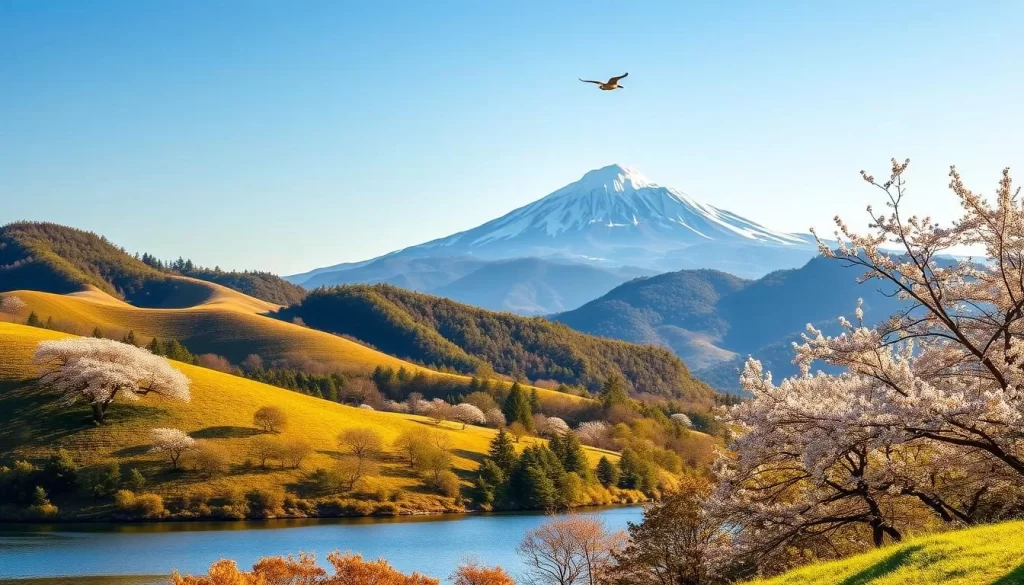
Optimal Visiting Periods for Different Travel Styles
Different travel styles require different timing. For example, if you’re looking for comfortable temperatures and scenic beauty, spring (March to May) and autumn (September to November) are ideal. These periods offer mild weather and stunning natural landscapes, making them perfect for outdoor activities like hiking and cycling.
If you’re not averse to heat and humidity, summer brings a different tempo to Ibaraki, with opportunities for water activities and enjoying the greenery. On the other hand, winter is great for those who enjoy cooler climates and scenic winter landscapes.
Weather Considerations for Popular Attractions
Ibaraki’s popular attractions have optimal visiting times based on the weather. For instance, Hitachi Seaside Park is famous for its seasonal flower fields: nemophila in late April to mid-May, roses in June, sunflowers in July-August, and kochia in October. Kairakuen Garden is best visited during the plum blossom festival from late February to March or during autumn for colorful foliage.
Other attractions like Mount Tsukuba are most enjoyable in May-June and September-October for hiking, while coastal attractions like Oarai’s Isosaki Shrine are dramatically photographed during winter. Understanding these weather considerations can enhance your visit to these popular spots.
Avoiding Crowds: Strategic Timing for Your Visit
When planning your trip to Ibaraki Prefecture, timing is everything if you want to avoid the crowds. Understanding the best times to visit can make a significant difference in your travel experience, allowing you to enjoy popular attractions without the masses.
Peak Tourist Seasons to Consider
Ibaraki Prefecture experiences peak tourist seasons during cherry blossom season in the spring and Golden Week, a week-long holiday in Japan that usually takes place in late April or early May. These periods attract large crowds, making popular spots busier than usual. If you’re looking to avoid these crowds, it’s essential to plan your visit around these times.
Visiting during the peak seasons can be challenging due to the large number of tourists. However, if you do plan to visit during this time, consider exploring lesser-known areas to avoid the crowds.
Off-Peak Benefits and Hidden Gems
On the other hand, visiting Ibaraki during the off-peak seasons can be incredibly rewarding. The rainy season in June and July, for instance, offers a unique opportunity to explore popular attractions like Kairakuen Garden with fewer tourists and lush greenery. Similarly, the winter months from January to March provide a serene atmosphere, perfect for enjoying hot springs and snow sports.
Some of the hidden gems to explore during the off-peak seasons include the Makabe Historical District, the ceramic town of Kasama, and the coastal areas of Hitachinaka and Oarai. These destinations offer authentic cultural experiences and breathtaking landscapes without the crowds.
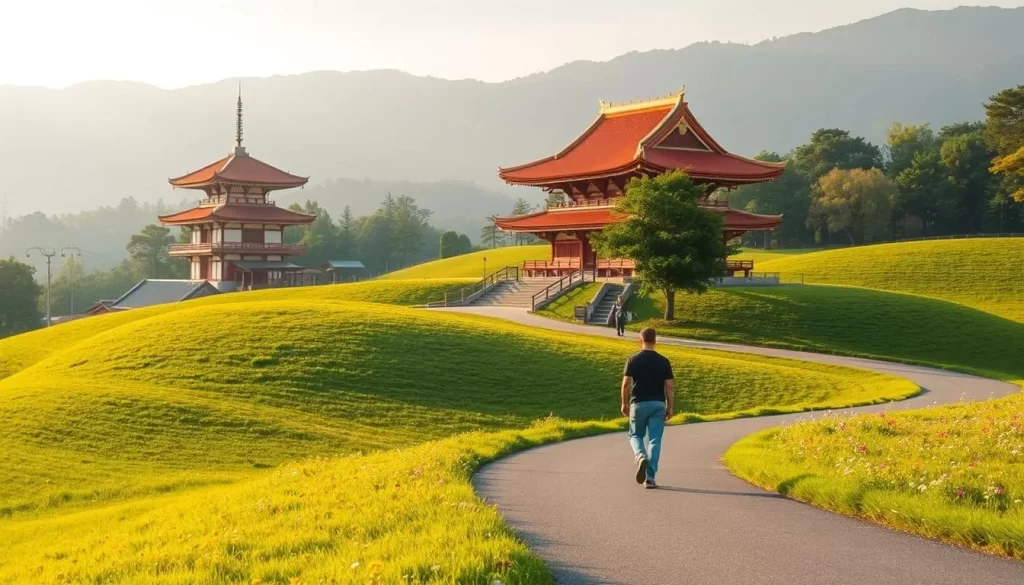
Practical Travel Tips for Every Season
As you plan your trip to Ibaraki Prefecture, being mindful of the weather and seasonal activities can greatly enhance your travel experience. To make the most of your visit, consider packing layers for your trip, as temperatures can vary significantly throughout the year.
Regardless of the season you visit, it’s essential to be prepared. For spring, bring waterproof footwear and a light raincoat for occasional showers. In summer, prioritize breathable clothing and sun protection. For fall, pack layers for varying temperatures, and don’t forget a camera to capture the stunning foliage. In winter, thermal underwear and a warm coat are must-haves.
Additionally, consider the local transportation schedule, especially in rural areas, and reserve accommodations in advance during peak times like New Year or cherry blossom viewing. By being prepared and aware of these factors, you can have a more enjoyable and stress-free trip to this beautiful destination.
The above is subject to change.
Check back often to TRAVEL.COM for the latest travel tips and deals.

